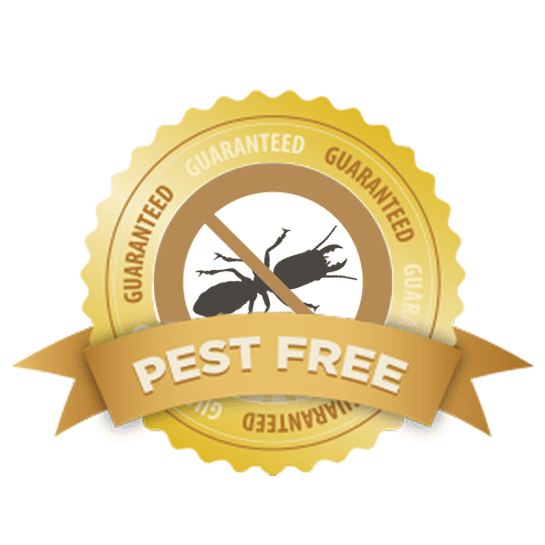Efficient A1 Bed Bug Treatment in Charlotte - Safe and Proven Techniques
Efficient A1 Bed Bug Treatment in Charlotte - Safe and Proven Techniques
Blog Article
Bed Insect Treatment Failure: Contrasting Chemical Vs. Non-Chemical Solutions
In the world of insect control, particularly when dealing with the consistent problem of bed pests, the choice between chemical and non-chemical treatment remedies can be a pivotal one. Both techniques use unique advantages and downsides, affecting aspects such as effectiveness, safety and security considerations, and overall price. By taking a look at the nuanced details of each approach, a more clear understanding of which path to go after in addressing a bed insect problem can be attained.
Performance of Chemical Treatments
Chemical treatments for bed bug invasions have been commonly acknowledged for their potent and fast effectiveness in getting rid of these pests. When thinking about the performance of chemical therapies, it is essential to recognize that they can supply a comprehensive and fast solution to a bed bug issue.
Additionally, chemical treatments have the benefit of using recurring impacts, indicating that they can proceed to get rid of bed bugs even after the initial application. This residual action is specifically useful in combating any kind of prospective re-infestations. Additionally, the quick activity of chemical therapies can bring relief to individuals facing serious bed pest infestations, allowing them to restore control of their living rooms promptly.
Safety Worry About Chemical Solutions
One important facet that requires cautious factor to consider when utilizing chemical solutions for bed insect treatment is ensuring the security of occupants and the atmosphere. Direct exposure to certain chemicals used in bed insect therapies can lead to breathing issues, skin irritability, or other unfavorable responses, particularly in individuals with pre-existing problems or sensitivities.
Additionally, the environmental influence of chemical remedies is one more substantial consideration. Some chemicals used in bed insect treatments might be dangerous to valuable pests, wild animals, and ecological communities if they leach into the soil or water systems. It is vital to use chemical therapies carefully, complying with safety guidelines, and taking into consideration much less harmful alternatives to alleviate these dangers and guarantee the secure and reliable administration of bed pest problems.
Benefits of Non-Chemical Methods
Taking into consideration the possible security problems and environmental effect connected with chemical solutions for bed pest treatment, discovering non-chemical methods provides a promising alternative with several distinctive advantages. Non-chemical methods supply a much safer choice for households, particularly those with individuals, pets, or youngsters conscious severe chemicals. These approaches get rid of the risks of exposure to toxic compounds, reducing the potential for adverse wellness impacts. Additionally, non-chemical therapies are environmentally friendly, as they do not add to air or water contamination, making them a lasting selection for parasite control.
Furthermore, non-chemical options can be efficient in targeting bed bugs, including hard-to-reach locations where chemical therapies might not penetrate. Techniques such as warmth therapy, vacuuming, vapor cleansing, and mattress encasements offer complete removal without using harmful chemicals. Furthermore, non-chemical strategies can be much less turbulent, needing very little prep work and enabling quicker reentry right into treated areas. In general, opting for non-chemical bed insect therapy methods not just prioritizes security and environmental management however likewise guarantees reliable and detailed insect control.
Limitations of Non-Chemical Treatments

Additionally, non-chemical therapies commonly need several applications to accomplish successful eradication. This can be taxing and might not always assure total removal of all bed insects and their eggs, especially in hidden or hard-to-reach areas.
Moreover, the success of non-chemical treatments heavily counts on correct execution and thoroughness, which can be testing for people without specialist know-how. Insufficient application of non-chemical techniques may result in incomplete removal, resulting in relentless invasions and the need for added treatments.
Therefore, while non-chemical therapies have their benefits, it is vital to A1 exterminators charlotte nc recognize these limitations and consider them when figuring out one of the most reliable method for managing bed pest infestations.
Cost Contrast: Chemical Vs. Non-Chemical Options
Offered the constraints linked with non-chemical therapies, an essential facet to assess in the context of bed bug management is the expense contrast in between chemical and non-chemical choices. In contrast, non-chemical treatments like heat treatment or heavy steam can be a lot more pricey, with expenses varying from $1,000 to $6,000 for an entire home. While the first price of chemical treatments may appear lower, several therapies may be needed to fully get rid of the infestation, potentially increasing the general cost.
Verdict

Taking into consideration the potential safety and security worries and environmental influence linked with chemical solutions for bed bug therapy, checking out non-chemical strategies offers a promising alternative with numerous distinct benefits.Provided the limitations linked with non-chemical therapies, a necessary facet to review in the context of bed insect monitoring is the price comparison in between chemical and non-chemical options. In comparison, non-chemical therapies like heat treatment or heavy steam can be more costly, with expenses varying from $1,000 to $6,000 for an entire home. While the preliminary price of chemical treatments might appear lower, multiple therapies may be required to totally remove the infestation, potentially enhancing the total expense.In verdict, when contrasting chemical and non-chemical bed pest therapy alternatives, it is necessary to consider efficiency, safety and security, benefits, restrictions, and expense.
Report this page